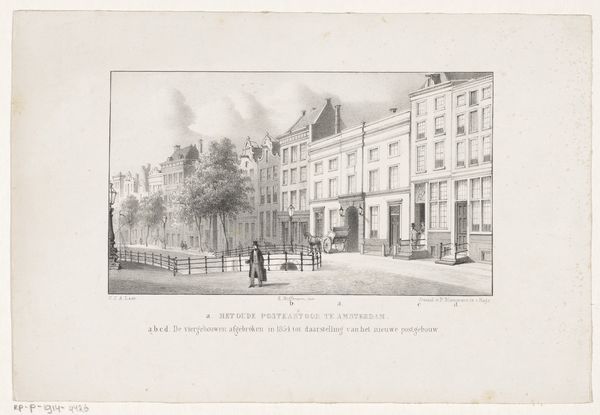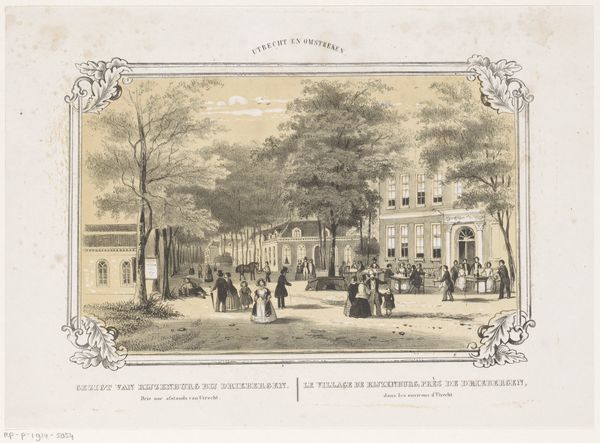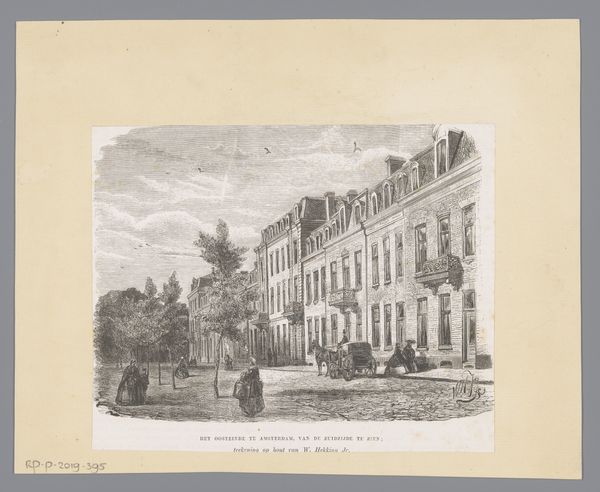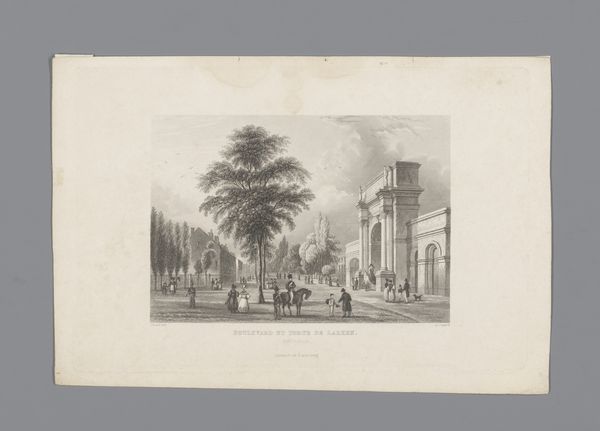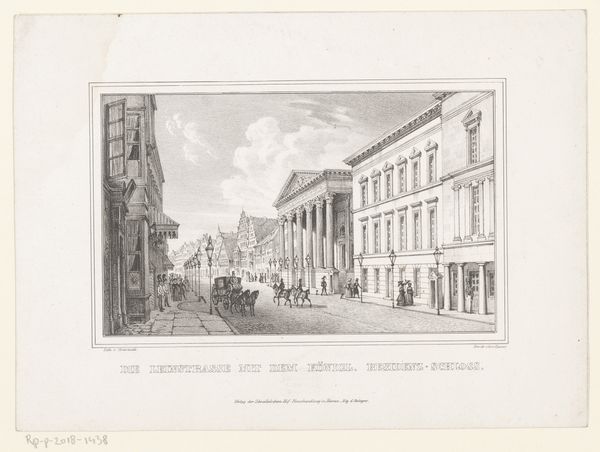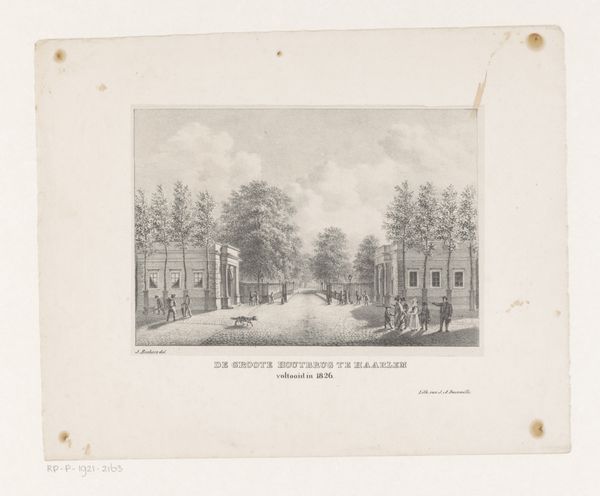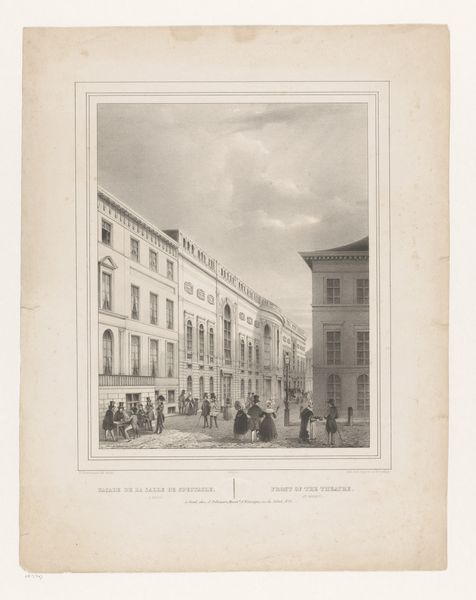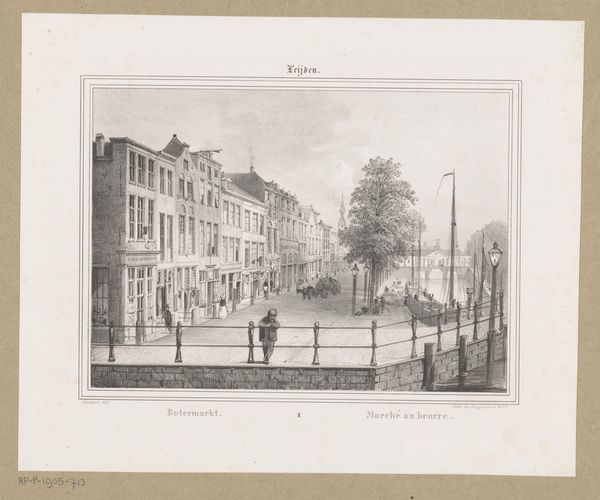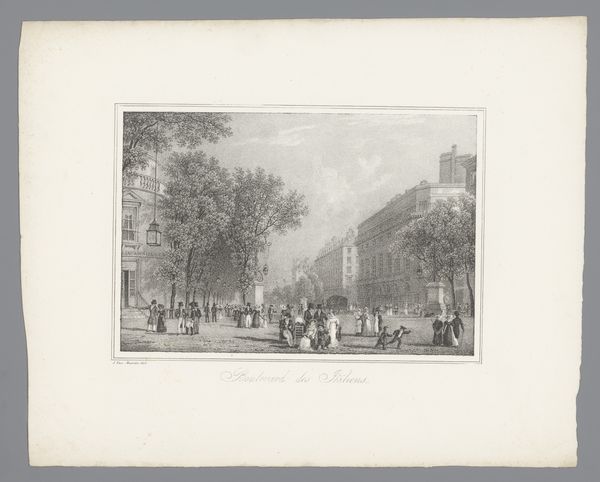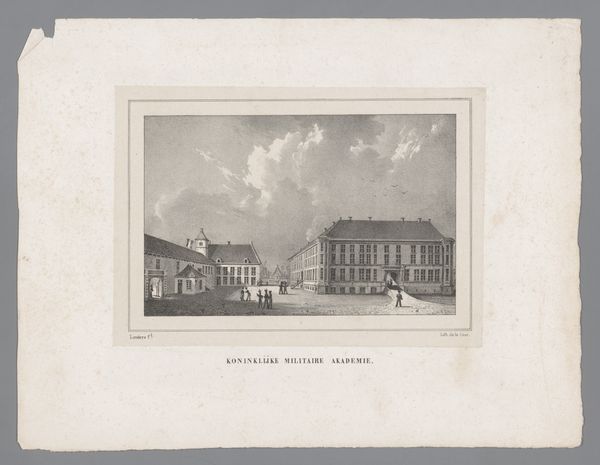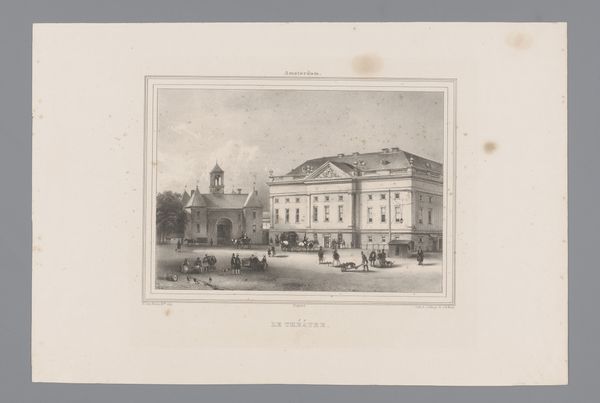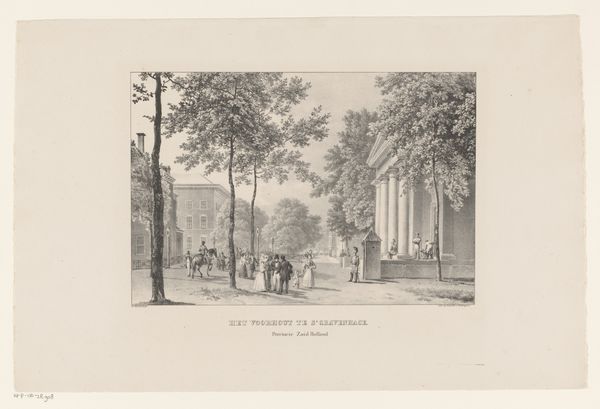
print, etching, paper
# print
#
etching
#
landscape
#
paper
#
romanticism
#
cityscape
#
genre-painting
#
paper medium
Dimensions: height 315 mm, width 482 mm
Copyright: Rijks Museum: Open Domain
Curator: Looking at this print, I'm immediately struck by how everyday it feels, yet with a kind of delicate formality. Editor: Indeed. The artwork, attributed to Barend Cornelis Koekkoek, captures the Grote Houtbrug in Haarlem in 1831. It’s an etching on paper, giving us this wonderful sense of light and shadow. What I see here is a specific narrative of place and people in their moment. Curator: Yes, the quotidian elevated! Notice how the bridge, though central, is not monumental. The people gathered seem almost posed, yet engaged in simple, plausible acts. There’s a powerful evocation of collective memory through this image of what might seem ordinary life, rendered enduringly beautiful. Editor: But isn't the so-called "ordinary" always encoded with power dynamics? I can’t help but wonder who is depicted here, and who is left out. Consider the labor behind maintaining such a pristine cityscape; we don't see them, the print instead presenting us with the genteel class. Curator: That's a compelling point about omission. At first glance, it may read simply as an image of societal harmony, a genre painting reflecting Romanticism’s love for landscape and nature. Yet, you are right; there are social strata visibly and invisibly at work. I appreciate your observation about the visual silences within. Still, these figures project ideals of the domestic and community in the era, ideas the rising merchant class certainly espoused. Editor: It’s the quiet power of these kinds of images. What seems like innocent depiction actually participates in shaping perceptions. I see the bridge itself as a potential metaphor, linking the visible with the unseen structures of its society. Even the dog running freely seems to occupy an uncontested terrain… an illusion perhaps. Curator: So the city, then, isn't just a collection of bricks and mortar but a symbolic arena where class and aspiration meet in coded interactions? Editor: Precisely. And I think that tension is what makes this etching, a seemingly simple street scene, endlessly engaging and critical for understanding the era's layered identities. Curator: Seeing beyond the picturesque certainly deepens my understanding of it. Editor: Yes, considering art as a historical participant and less of a passive mirror.
Comments
No comments
Be the first to comment and join the conversation on the ultimate creative platform.
